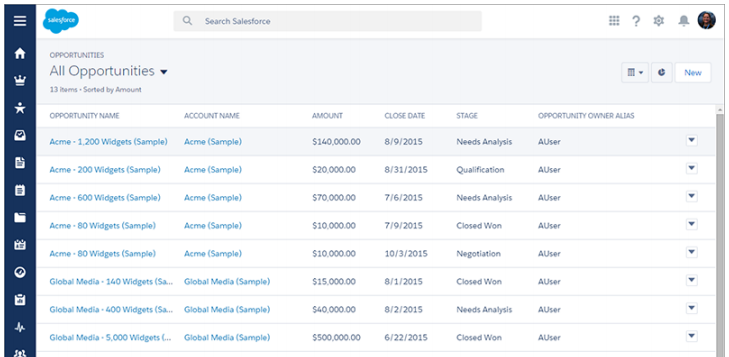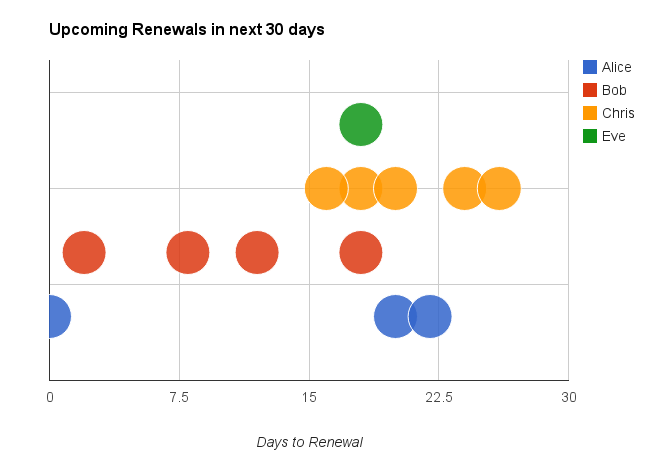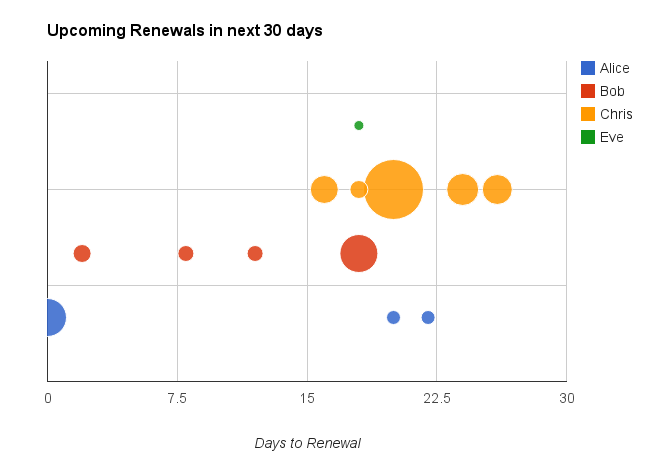In today’s ubiquitous SaaS landscape, most businesses tend to focus primarily on landing new customers to increase revenue. The downside of this singular focus on customer acquisition is often at the cost of nurturing existing customers for recurring revenue and presenting upselling opportunities. In this post, we present a new way of visualizing renewal activity, and opportunistically assign them to account managers.
1. What really is the problem?
For a majority of SaaS models, recurring revenue comes with higher margins and less pressure on the customer service teams to educate the clients. Unfortunately, it’s all too common to find:
- Customer contracts expiring without a sales call, simply due to poor processes and planning
- Bad data preventing businesses from seeing an accurate picture of their own renewals
- Renewals being run by distracted new-business reps or untrained non-sales staff
- The best way to engage renewing customers isn’t understood or followed
- Sales compensation incentives focusing significantly more on new contracts than renewals
Often there’s no formal process towards contract renewals. Sign the deal and forget about the customer until a renewal event.
It’s not uncommon to find sales teams use spreadsheets to layout their client data, and in the case of employee turnover or simply due to negligence – clients may not be contacted in time for a renewal. Not only is it important to get in touch with clients in time for renewals, but also to check up on them at intervals to ensure they are having a good experience using the product.
2. A first stab at a solution

With the spread of CRM products such as Salesforce, this process has improved such that client information is stored on a shared database and account managers are being notified when their clients’ renewal dates are approaching. This solves the fundamental issue of renewal dates going unnoticed, yet account managers are continuing to fail with renewal contracts in time.
Why are renewals still a problem?
A closer look at the renewal process in a majority of SaaS businesses reveals that sales resources are not distributed evenly across accounts based on their renewal dates and size. Account managers might be notified by the respective CRM regarding upcoming renewal dates, but:
- Renewal events can be clustered around the same time period
- Bigger deals take more time to negotiate and close
- Bigger accounts have multiple stakeholders, and a key stakeholder might have left the job or had a change in responsibilities
- A disengaged customer will have to be re-sold on your product and solution
All of this takes time – of unpredictable and varying amounts. We have the data, yet we keep dropping the ball.
The CRM notifications are a partial solution towards the problem.
3. Visual Analytics to the rescue
Visual Analytics is “the science of analytical reasoning facilitated by interactive visual interfaces.” You do not need to have massive amounts of data, commonly known as big data, or have highly complex problems in order to use Visual Analytics.
Let’s apply Visual Analytics to the problem of SaaS renewals!
3a. Laying out the renewal work load

The above chart depicts upcoming renewals spread out by number of days to renewals and the account manager responsible for the renewal. Clearly, Chris has a lot of renewals lined up two weeks from now and is going to be really busy!
He should be planning ahead for the torrent of work coming his work, or reassign some of the renewals to one of his colleagues.
3b. Adding context with the contract value

We have another dimension to play with – and that’s exactly what we do in the chart above. The size of bubble encodes another dimension, in this case, the contract size. The size of bubble is roughly an estimate of the amount of work involved in renewing the contract, bigger the contract, more the work.
From the chart above, we can see that Chris can reallocate some of his renewals to Alice or Eve, who have smaller renewals coming up and shouldn’t be too time consuming.
3c. Adding more context with the customer health
We have still more data to play with! Another factor in the work involved with renewals is the customer engagement with the product. If the customer is disengaged and finds no value in your product, they are less likely to renew. At this point, you’ve got to question whether it really is a renewal or a brand new sale if the customer will have to be re-sold on your product and solution.
We will be detailing this aspect of “customer health” in a future post – stay tuned!
4. Benefits
Recurring revenue is the backbone of a SaaS business and is one of the primary drivers of its valuation. Downplaying its importance in efforts to surge the top-line is a fundamental mistake that hurts the profitability and valuation of many SaaS businesses.
This does not necessarily mean that the sales team needs to spend a majority of their time on renewals, or have a dedicated team just for renewals. It simply implies that renewal processes needs to be flawlessly managed with the burden being shared evenly across the sales team.
It is in fact possible for a sales team to spend 20% of time to retain 85% of renewal business, with the remaining 80% of time being dedicated towards winning new customers.
To summarize, a flawless renewal process will:
- properly allocate time to upcoming renewals
- forecast problematic accounts and schedule more time towards it
- estimate cash coming in due to renewals, which is always a good thing
Image Credits: Unsplash


